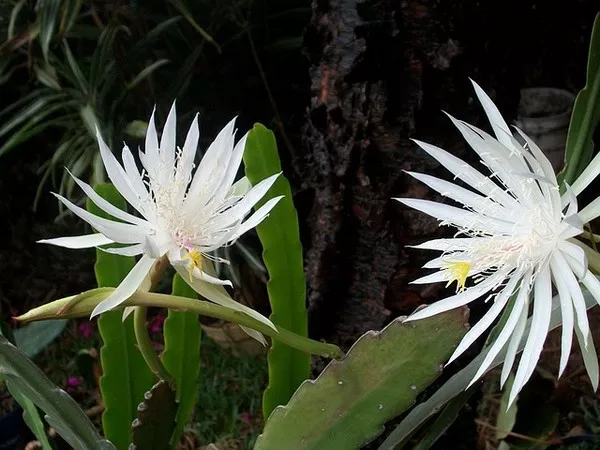Succulents have captured the hearts of many plant enthusiasts worldwide with their unique shapes, vibrant colors, and low-maintenance appeal. These hardy plants are well-known for their ability to thrive in arid conditions, making them a favorite choice for both seasoned gardeners and beginners. However, the question of how much water succulents need remains a topic of confusion and debate among plant enthusiasts. In this article, we will explore the various factors that influence the water requirements of succulents and provide practical guidance to ensure their health and longevity.
Understanding Succulents
Succulents are a diverse group of plants belonging to various botanical families, including but not limited to Crassulaceae, Aizoaceae, and Cactaceae. What unites them is their remarkable capacity to store water in specialized tissues, such as leaves, stems, and roots. This adaptation allows succulents to survive in arid environments with minimal access to moisture.
Water Storage Adaptations
Succulents have evolved various water storage adaptations that contribute to their drought tolerance. These adaptations include:
Thick Leaves: Many succulents have thick, fleshy leaves that can store water for extended periods. The thick cuticles of these leaves help reduce water loss through evaporation.
Water-Storing Stems: Some succulents, like cacti, store water primarily in their stems. The stems are modified to hold substantial quantities of water, which can sustain the plant during dry spells.
Shallow Roots: Succulents often have shallow root systems that quickly absorb moisture from rainfall or irrigation. These roots are efficient at capturing and storing water.
CAM Photosynthesis: Some succulents, such as members of the Crassulaceae family, employ Crassulacean Acid Metabolism (CAM) photosynthesis. CAM plants open their stomata at night to reduce water loss and then close them during the day to minimize transpiration.
Factors Influencing Water Needs
While succulents are generally drought-tolerant, their water requirements can vary significantly based on several factors. Understanding these factors is crucial for successful succulent care:
Species and Variety: Different succulent species and varieties have varying water requirements. It’s essential to research the specific needs of your succulents to ensure they receive the right amount of water.
Climate: The climate in which your succulents are grown plays a significant role in determining their water needs. Succulents grown in hot, arid regions may require less water than those in cooler, more humid environments.
Season: Succulent water requirements can fluctuate with the seasons. During the growing season (typically spring and summer), they may need more water, while they can be watered sparingly in the dormant season (fall and winter).
Container vs. Ground: The type of planting container or medium can affect water retention. Succulents planted in porous soil in containers will dry out faster and may require more frequent watering than those planted directly in the ground.
Sunlight: The amount of sunlight your succulents receive influences their water needs. Succulents in full sun may need more water than those in partial shade because increased light levels can lead to faster evaporation.
Size of the Plant: Larger succulents generally require more water than smaller ones due to their increased surface area and water storage capacity.
Drainage: Proper drainage is critical for succulents. Overwatering can be more detrimental than underwatering, as it can lead to root rot. Ensure that the planting container has adequate drainage holes to prevent waterlogged soil.
Watering Guidelines for Succulents
Now that we understand the factors influencing succulent water needs, let’s delve into practical guidelines for watering succulents:
Water Sparingly: Succulents are adapted to infrequent watering. Allow the soil to dry out completely between waterings. Stick your finger into the soil up to the second knuckle to check for moisture. Water only when the soil feels dry at this depth.
Water at the Base: When watering succulents, aim to moisten the soil around the roots rather than wetting the foliage. This helps prevent issues like fungal diseases and rot.
Use the Right Pot and Soil: Choose well-draining pots and potting mixes specifically designed for succulents. These mixes typically contain ingredients like perlite, sand, or pumice to promote good drainage.
Watering Schedule: Establish a watering schedule based on the specific needs of your succulents and the environmental conditions in your area. During the growing season, you may need to water more frequently, while less frequent watering is suitable during the dormant season.
Adjust for Climate: Succulents in hot, dry climates may require more frequent watering than those in cooler, more humid regions. Be prepared to adapt your watering schedule accordingly.
Avoid Overwatering: Overwatering is a common mistake that can lead to root rot and other health issues. Ensure that excess water drains freely from the pot and that there is no standing water in the saucer.
Rainfall Considerations: If your succulents are outdoors, take into account natural rainfall. Reduce watering during rainy periods, and only supplement with water when necessary.
Observe Your Plants: Pay attention to the appearance of your succulents. If the leaves begin to wrinkle or lose their plumpness, it’s a sign they may need more water. Conversely, if you notice signs of overwatering, such as yellowing leaves or mushy stems, reduce your watering frequency.
Conclusion
Succulents are renowned for their beauty and resilience, but their water needs can be a source of confusion for many plant enthusiasts. Understanding the factors that influence succulent water requirements and following best practices for watering can help ensure the health and longevity of these remarkable plants. By finding the right balance between hydration and drought tolerance, you can enjoy the beauty of succulents in your garden or home for years to come. Remember, when in doubt, it’s often better to underwater than to overwater succulents, as they are better equipped to handle dry conditions than excessive moisture.


